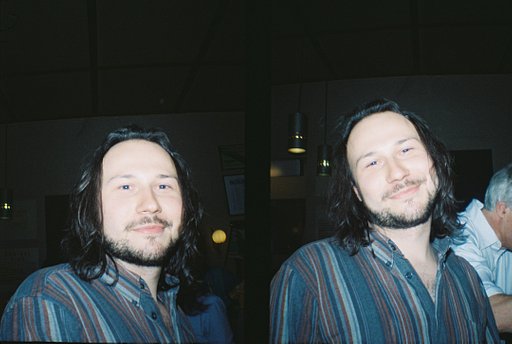What is color negative film and C-41 processing?
Color negative film is the most common and widely used type of color film. One of the main features of color negative film is its flexible exposure latitude. This means that it is very forgiving of incorrect exposure, particularly overexposure. Missing the correct exposure by 1 or 2 stops is no big deal with color negative film as you will usually still get decent results.
Color negative film is made up of three layers of emulsion, each sensitive to a different color of light (blue, green and red). The layers contain light-sensitive silver halide crystals, and chemicals called dye couplers. When the film is developed, the interaction of the silver halide, dye couplers and developing chemicals produces a negative image.

There are many different varieties of color negative film, with a wide range of film speeds and color reproduction. This is part of what makes film photography so fun. Some films produce vivid colors, while others give paler tones to images. At Lomography we have a wide variety of exciting color films. Our Color Negative range produces accurate and true to life colors while the LomoChrome family of films create dramatically altered colors for stunning effects. However all of our color film uses C-41 processing.
C-41 is the name for the standard process for developing color negative film. The majority of colour film in use today uses C-41 processing and it has been the industry standard since 1972. Because of this standardization, C-41 processing is usually done by machine and is therefore cheaper than B&W film to have developed at a lab.
It is also possible to develop color negative film at home, however it is more complicated than developing B&W film because of the precise temperature and timings that are required to achieve good results.
Anything missing?
Can’t find an answer to your question? Or do you have some useful advice to add to one of our courses? We want to build the world’s largest analogue learning space, so please send any further requests or information to school@lomography.com and we’ll take a look!
More Courses
-
What are the different photographic film formats?
The three main types of film format are 35 mm, medium format and large format. More unusual formats also exist such as 110 and 127.
-
What is tungsten film?
Most standard films are daylight-balanced, so they tend to capture the yellow-orange cast from tungsten lights. To address this, tungsten film was created to produce color-correct images taken under artificial lighting.
-
What is 126 film?
126 film was launched by Kodak in 1963 as a way to simplify the process of loading and unloading film into cameras. Its name comes from the negatives’ dimension of 26.5 mm square. Although companies ceased mass production of 126 format around 2007 to 2008, its cartridge is still known and loved today.
-
What is APS film?
Advanced Photo System or APS film was introduced in 1996 as a “high-tech” or modern alternative to the 126 and 110 film formats. It was 24 mm wide and it introduced many innovations, like the ability to choose exposure lengths and print sizes. Production of new APS film was ceased in 2011.
-
What is the difference between panchromatic and orthochromatic film?
Orthochromatic film is made with blue-sensitive silver halide crystals, while panchromatic film adds other chemicals to increase the film’s sensitivity into the green and red parts of the spectrum.
-
What is a half-frame film camera?
Half-frame cameras shoot 18×24 mm photographs on 35 mm film. This means you can take up to 72 images on one single roll and save a lot of film!
-
What are LomoChrome films?
LomoChrome is the name given to Lomography’s experimental film stocks. There are currently four LomoChrome film stocks available: LomoChrome Purple, LomoChrome Turquoise, LomoChrome Metropolis, and LomoChrome Color ‘92.
-
Where to get film developed?
There are a lot of places that can process and develop your 35 mm color negative film such as local drugstores or one-hour photo labs.
-
What is the processing method for Redscale and LomoChrome films?
All Lomography color films are processed using C-41 chemicals. This includes Lomography RedScale XR and our popular range of color-shifting LomoChrome films – LomoChrome Purple, LomoChrome Metropolis and LomoChrome Turquoise





